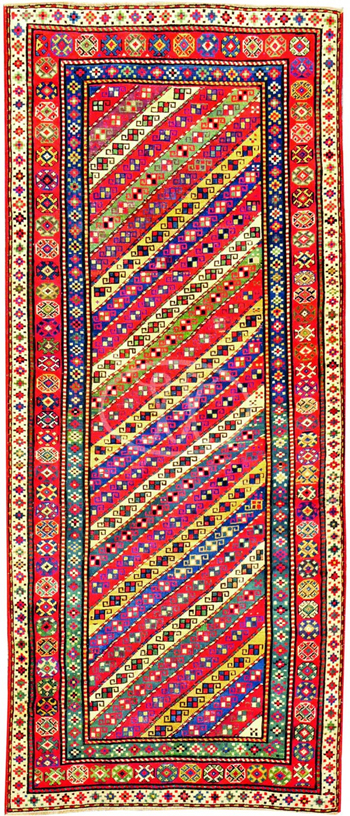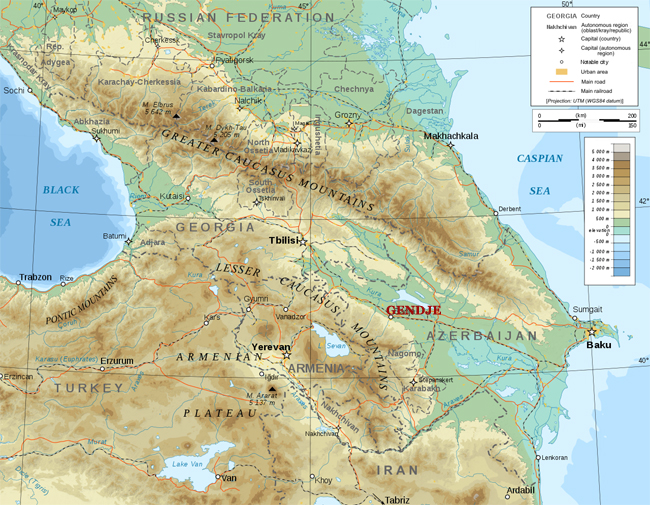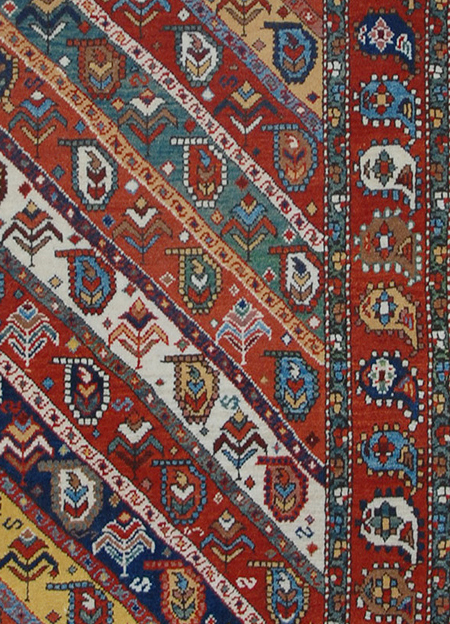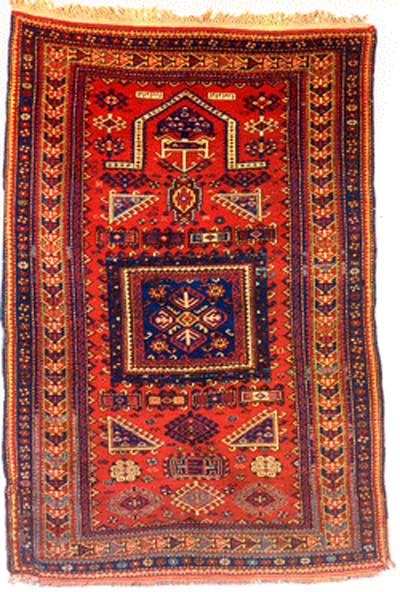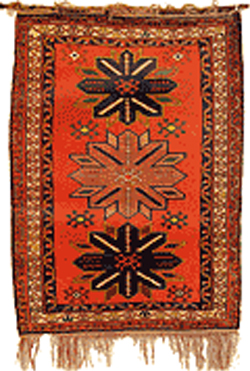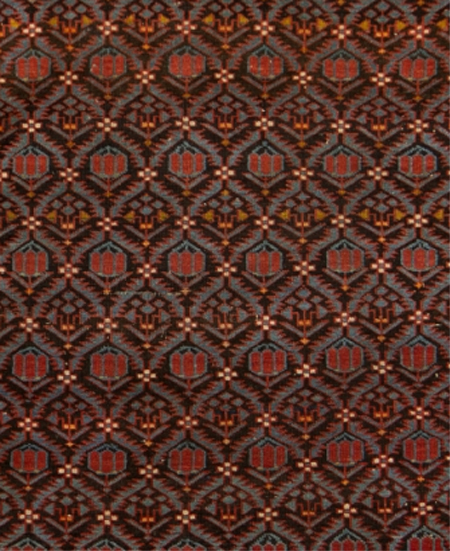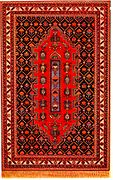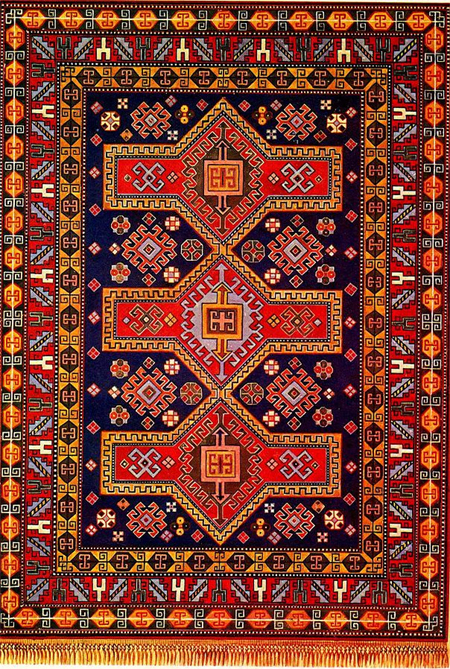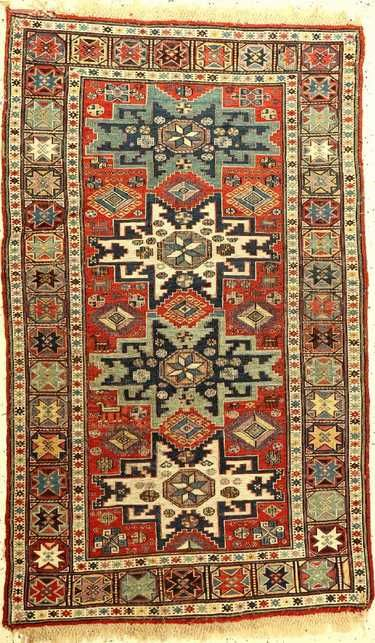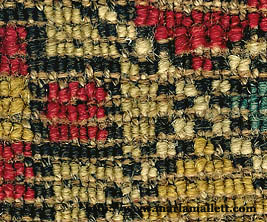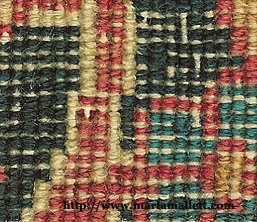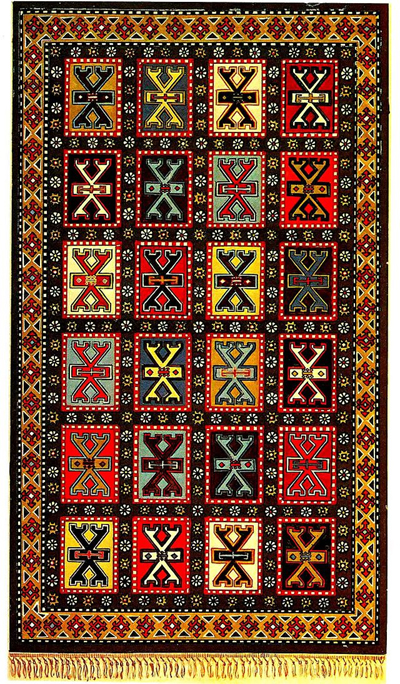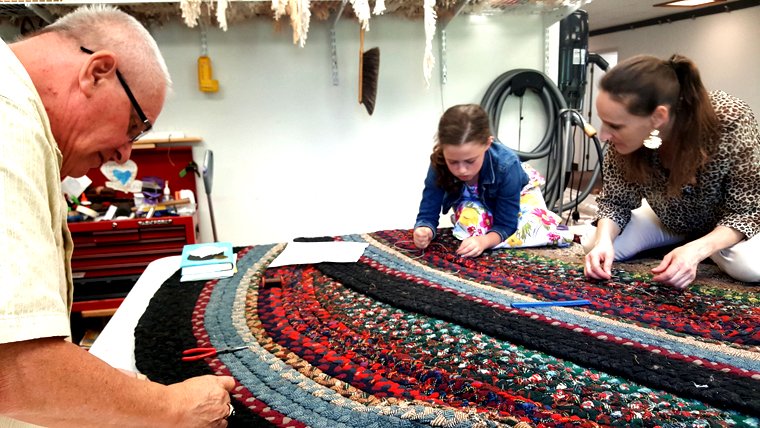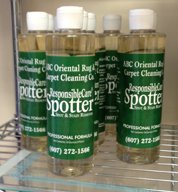GENDJE ORIENTAL RUGS
LOCATION
Gendje oriental rugs (Ganja, Geunge, etc.) were woven in the town of Gendje in the traditional rug-weaving area of the Caucasus Mountains. The name Gendje also refers to the mountainous area surrounding the town.
Gendje is located on the Western shore of the Caspian Sea and is bounded by the Black and Caspian Seas to the East and West, Russia to the North, and Turkey and Iran to the South.
Gendje is situated on the main road connecting Tbilisi (Bilisi), the capital of Georgia (formerly a part of the Soviet Union and now an independent republic), and Baku, the capital of Azerbaijan. This location, between the weaving areas of Karabagh, Kazak, and Shirvan, made it the marketing center for rugs from those areas as well.
ANTIQUE GENDJE RUGS
Several different types of rugs came out of the Gendje area. They included the Ancient or Gadim Gendje, Fakhrali, Gedebey, Golkend, Cheykend, Chayli, Chiragli, Samukh, and Shadili.
Information on each of these types of rugs can be found below...
ANCIENT or GADIM GENJE
These rugs are often called Gendje-Paisley rugs because they used the paisley pattern called Gendje-Buta (Boteh), which were often laid on the field diagonally. These rugs also contained religious symbols.
FAKHRALI
The Fakhrali rugs are prayer rugs and were woven in villages around Gendje. They were usually made in small sizes because they were used in and at religious ceremonies.
There would usually be an arc in the upper part of the field which represented the mosque architectural shape.
GEDEBEY
These rugs featured star-shaped medallions which extended vertically in the field. They usually contained simple patterned stripes. Yellow-colored rectangular patterns were also featured.
The Gedebey area also produced the Cheykend and Golbend type of Gendje oriental rugs.
CHAYLI
These rugs adopted some elements of the neighboring Shirvan rugs. An ancient figure called the Bendi-rumi can often be found. This figure is in the shape of a rhombus and is filled with geometric floral bouquets.
CHIRAGLI
These were medium quality rugs that were widely produced in other regions as well and could often be found labeled as Kazakhcha, Gendje, Fakhrali or Samkhor rugs.
SAMUKH
These are the oldest and the most popular of the Gendje oriental rugs and they differ in design from the others. A square located in the center of the field will have medium sized star-shaped medallions located above and below.
They are characteristic of Shirvan and Kuba rugs. Two basic elements found in these rugs are the val, a threshing board and the goosh, a bird.

Samukh Rug
SHADILI
These were also medium quality rugs. They were sometimes labeled as Kazak, Gendje, Caucasus, and Agstafa rugs as well.
CONSTRUCTION OF
GENDJE ORIENTAL RUGS
FOUNDATION
Like the Kazak rugs, the Gendje oriental rugs generally had wool warps (up and down cords) and long, thick pile. Unlike the Kazaks, the wefts (side to side cords) were undyed cotton or pale red woolen wefts.
Often the warps are strongly depressed, giving the back of the rug a corrugated appearance. (Depressed warps (up and down cords) occur when the wefts (side to side cords) are pulled tightly from either side rather than put in with minimal tension. This will displace the warps into 2 levels).
KNOT
Most rugs from the Caucasus Mountains use the Turkish (Ghiordes) or Symmetrical knot.
DESIGN OF GENDJE ORIENTAL RUGS
Gendje oriental rugs were usually long and narrow and also included runners. A distinctive feature of Gendje weaving was a pattern of many-colored diagonal stripes featuring small floral designs, sometimes alternating with rows of boteh figures as well as multi-colored octagon borders. These borders could contain many subtle natural hues, giving a sense of harmony and movement to the design. The crab design was frequently used as well.
Another design used for Gendje oriental rugs was a diamond-shaped medallion which would have a white outline that curved outwards and opened up on each vertical side of the medallion.
Yet another of the Gendje rugs contained many x-shaped shield-type designs.
Some Gendje oriental rugs greatly resembled the rugs of their Caucasian neighbors, especially the Kazaks.
WHY HAS WEAVING STALLED IN THE CAUCASUS MOUNTAIN REGION?
THE REIGN OF THE SOVIET UNION
As is the case with the majority of Caucasian oriental rugs woven in the past, very few, if any rugs are woven there today. Most of the Gendje rugs were woven more than a century ago even though the rug weaving tradition goes all the way back to the 13th century!
In the 1860s, with the establishment of the Soviet reign in the Caucasus in Azerbaijan, the quality of rugs fell and the use of natural dyes and hand spun wool decreased. In order to make rugs a profitable export item, home weavers were provided with patterns and wool and the Tsarist officials took care of the sales. The weavers were told what type of designs to use and what type of wool.
During World War II, the weaving there had reached a decline from which it has yet to recover. By the 1960s, except for in some mountainous regions, the tradition of the ancestors was, for the most part, completely lost.
Azeri officials even today impose taxes and fees on rug exporters, and unlike other rug-producing countries, they do not encourage production by awarding subsidies. Pakistan and Afghanistan can produce their own copies of Caucasus rugs at a fraction of the cost.
THE OIL BOOM
There are many countries copying Caucasian designs so it would seem there should be at least as many Caucasian weavers as there are imitators. Unfortunately though, an oil boom has dislocated traditional life.
Baku, the city at the center of the boom, now contains over half of the country's population! But those who move to the city seeking this new money don't always get it so there are large degrees of differences in income.
COMMERCIAL WEAVING OPPORTUNITIES
The Azerbaijani village women who were the base of traditional weaving have given up weaving at home and taken to working in commercial weaving. This is one of only a few employment opportunities for women and it pays an average wage.
Unfortunately, commercial weaving companies in Azerbaijan produce inexpensive rugs that are not much different from those produced anywhere else.
THE ANTIQUE RUGS OF THE FUTURE PROJECT
This private project was begun in 2008 in a workshop in the center of Baku city. The goal of the project was an attempt to rediscover the forgotten secrets of the weavers of the ancient Caucasian rugs.
Extensive research was done to revive the traditional designs and ancient rug making methods. Only hand carded and hand spun wool is used. The dyes are natural derived from local plants.
The weaving of these rugs is under strict quality control and each tag on a finished rug has the weaver's name and structural data along with the availability of the historical and artistic analysis of the specific design of the rug.
The project works with local women who are encouraged to weave the rugs at home, improving their social and economic status. Child labor is strictly outlawed.
The Antique Rugs of the Future may no longer exist but other firms have also stepped in to revive the traditional weaving, such as Aygun, located near Kuba. The state-run Azerkhalcha Company, established under the presidential decree in May of 2016, has the goal of reviving Azerbaijan's weaving traditions and reintroducing Azerbaijani rugs to the world.
CAUCASIAN RUG DESIGNS
IN OTHER COUNTRIES
As noted above, several other countries now produce new rugs with Caucasian designs. Some are even on wool foundations and use natural dyes.
Turkey, in the 1970s and 1980s was one of these, along with Afghanistan and Pakistan. Unfortunately, after the 1980s, Turkish rug production was not able to compete with the rugs of the other countries because of rising prices in Turkey. Even so, some new rugs with Caucasion designs can occasionally be found there.
"The Cleanest Clean You've Ever Seen."
by
ABC Oriental Rug & Carpet Cleaning Co.
130 Cecil Malone Drive Ithaca, NY 14850
607-272-1566
ABC
Carpet & Rug
Spotting Guide
Learn how to remove spots with ordinary household solutions
Sign up below to gain access to your complementary Spotting Guide from ABC.
Registering your email address guarantees you will be notified whenever discount savings coupons become available.
Did you know that our ABC Responsible Care Spotter can get those pesky spots out of your carpet and rugs and will work equally as well on your clothes and upholstery?
Stop by our office and pick one up. They are $5.00 + Tax but if you have carpets or upholstery cleaned in your home or business, just request a free one from your Technician.
And don't forget to fill out the form above to download your free ABC Spotting Guide!
GIVE THE
GIFT OF CLEAN!

Why not think 'outside the box' and give
a Gift Certificate for professional carpet, upholstery, or tile
& grout cleaning from ABC for any special occasion!
Does a special person have a favorite area rug or oriental rug that needs cleaning or repair? Just give us a call. You'll make their day!
Bring in the mats from a car and we'll clean them as well.
Contact
us if you live in the Ithaca, NY or surrounding areas and we will
tailor a special gift certificate just for you for any Special Occasion.
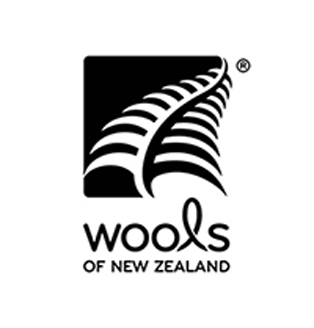
The Standard of Excellence
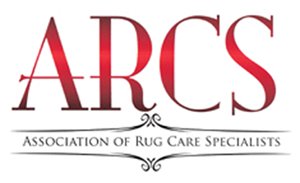
ABC Oriental Rug & Carpet Cleaning Co.
is a FOUNDING MEMBER of the
Association
of Rug Care Specialists.
"To Teach, Cultivate and Advance the Art and Science
of Rug Care"

ABC
Carpet & Rug Spotting Guide
Learn how to remove spots with ordinary household solutions.
Sign up below to gain access to your complementary
Spotting Guide
from ABC.
Registering your email address guarantees you will be notified whenever discount savings coupons become available.
ABC Oriental Rug is on Facebook!
We regularly post tips and information about your carpet, rugs, upholstery, and tile and grout so please visit us often.
We update our Facebook page with our latest discounts and we are also offering exclusive promotions to our Facebook fans.
These are limited and short notice promotions.
